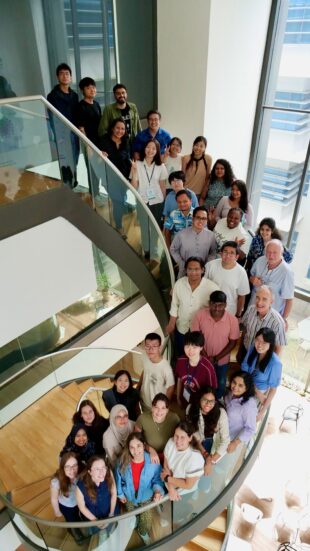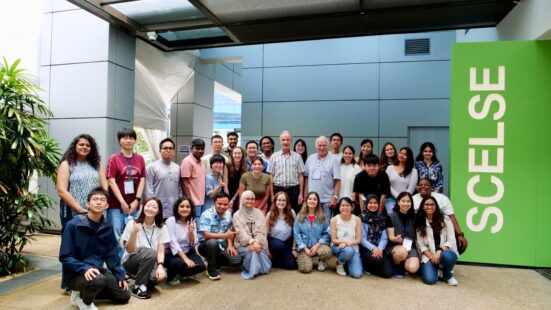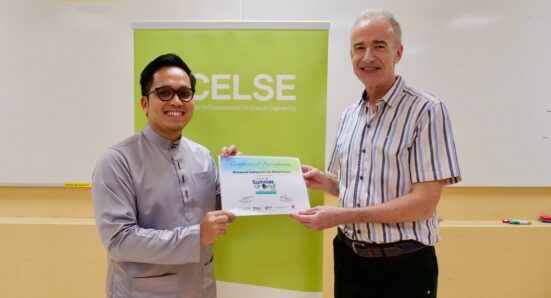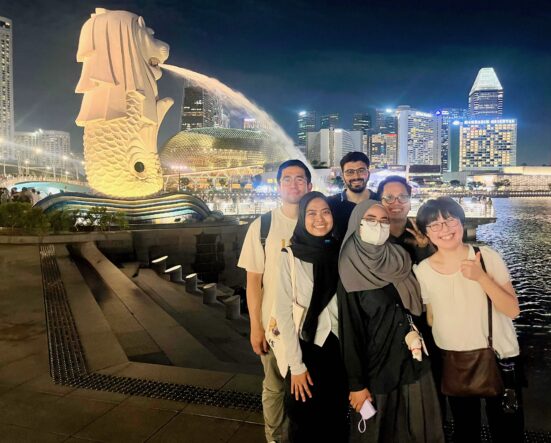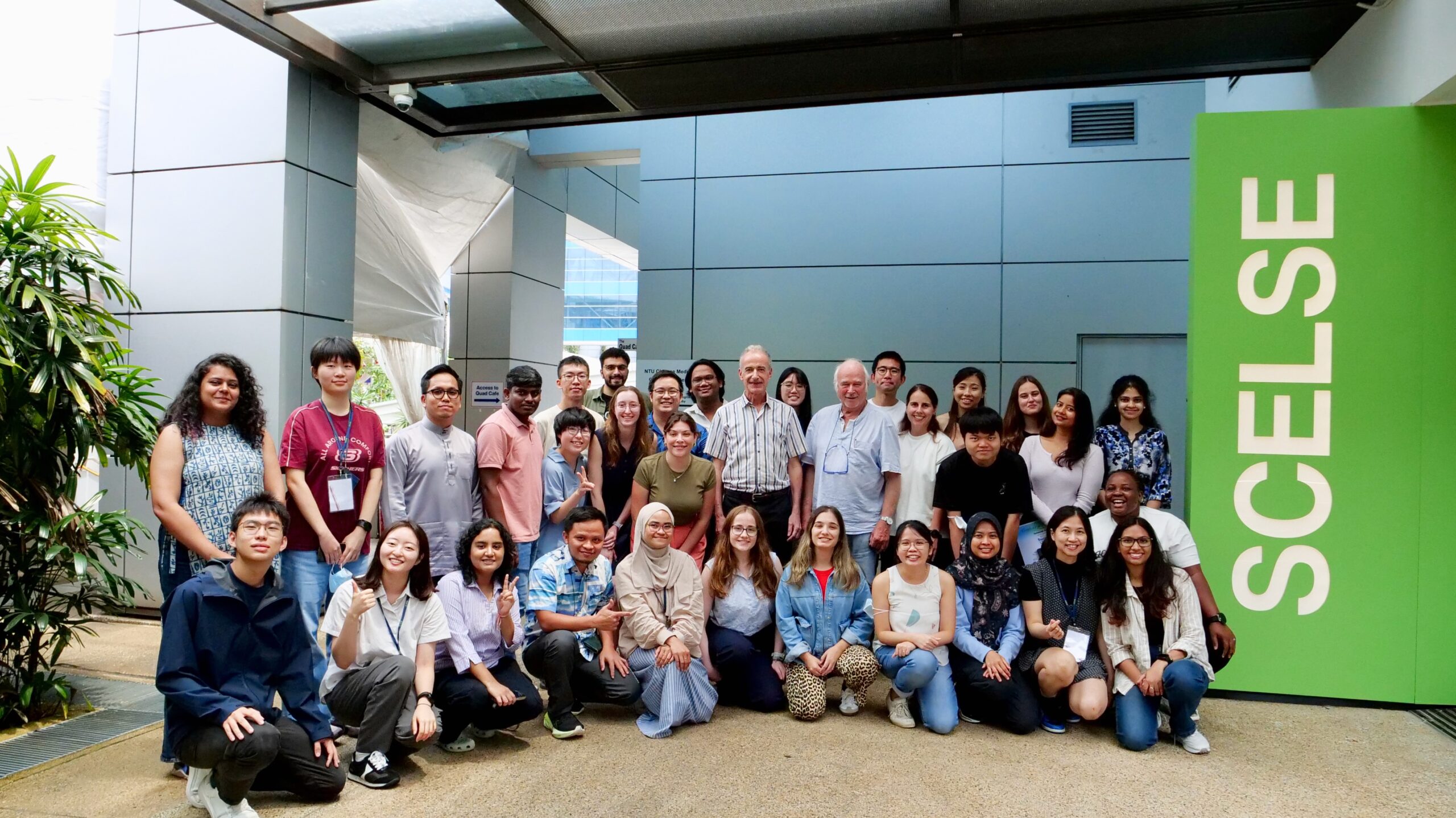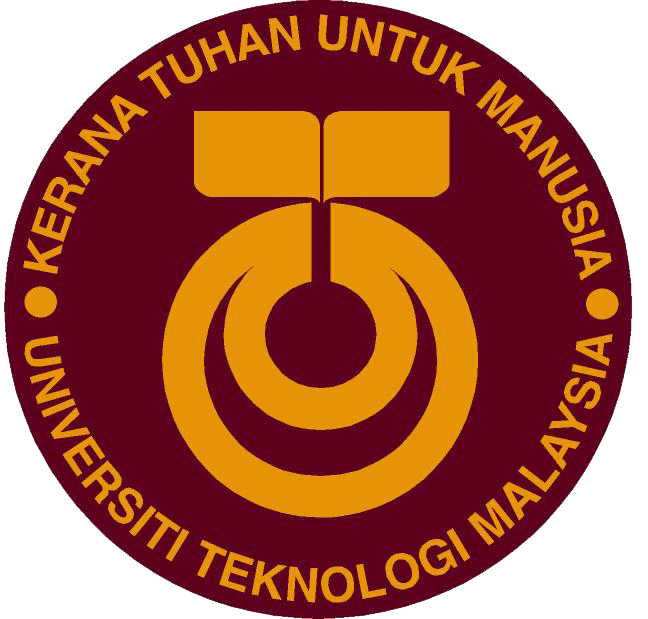Bridging Wastewater and Microbial Life
My motivation for applying to this program stemmed from my PhD research on methane production from palm oil mill effluent (POME). I aimed to deepen my understanding of biofilm formation, microbial interactions, and the use of microbial consortia in wastewater valorisation. When my supervisor, Assoc. Prof. ChM. Dr. Mohd Firdaus Abdul Wahab introduced me to this program, and I immediately recognised its relevance to both my academic and personal growth.
The course offered a carefully curated curriculum that began with the fundamentals of biofilm biology, physiology, and microbial ecology. It then progressed to cutting-edge applications such as metagenomics, antimicrobial resistance, wastewater treatment, and bioelectrochemical systems. One of the most impactful lectures for me was given by Prof. Stefan Wuertz, who detailed the kinetics of Chemical Oxygen Demand (COD) and Biochemical Oxygen Demand (BOD) removal in bioreactors. This lecture complemented my current work on optimising anaerobic digestion systems.
Among the many practical highlights, the fieldwork on St. John’s Island was unforgettable. We collected marine water samples, observed plankton under a microscope, and participated in real-time DNA extraction and sequencing using the Oxford Nanopore MinION device, a portable sequencer powered by a laptop. Witnessing this technology in action was astonishing and highlighted how accessible and decentralised genomics has become in modern microbial ecology.
World-Class Lecturers and Hands-On Research Skills
One of the greatest strengths of the Singapore Centre for Environmental Life Sciences Engineering (SCELSE) Summer Course was the opportunity to learn from a truly global network of renowned researchers. The lectures were not only content-rich but also thought-provoking, often followed by interactive discussions that encouraged us to engage, challenge, and reflect.
I was particularly inspired by Prof. Stefan Wuertz, who also served as our course coordinator. His sessions on biofilm kinetics and wastewater treatment processes resonated deeply with my current PhD research on the anaerobic digestion of POME. He explained bioreactor dynamics and COD removal in a clear and practical manner, which helped me reassess several assumptions in my reactor design.
Another figure who left a lasting impression was Dr. Rohan Williams, a computational biologist and SCELSE research fellow at the National University of Singapore (NUS). His hands-on instruction in microbiome bioinformatics and metagenomic sequencing pipelines provided me with valuable tools to interpret microbial community structures, particularly in complex systems such as bioreactors. I was amazed at how accessible advanced bioinformatics could become with the right guidance and computational tools.
During our data analysis workshops, Dr. Ezequiel Santillan introduced us to R software for scientific statistics and modeling. His structured approach to experimental design, replication, and statistical validation opened my eyes to how I could enhance the robustness of my biogas studies.
Other remarkable speakers included Prof. Maria Hadjifrangiskou from Vanderbilt University (VU), Prof. Gerard Wong from the University of California, Los Angeles (UCLA), and Dr. Lucinda Doyle from the Indian Institute of Technology Delhi (IIT Delhi). Each of them offered unique perspectives that reshaped how I now think about microbial ecosystems.
Global Friendships, Shared Aspirations
Perhaps the most heartwarming aspect of this summer course was the camaraderie and mutual support among participants from across the world. Despite our diverse backgrounds, languages, and research topics, we found unity in our passion for science and our determination to solve real-world problems.
My roommate, Malek Hawela, from the University of Southampton in England, was working on antimicrobial resistance in Pseudomonas aeruginosa, a topic far from my own; yet, our discussions were rich and meaningful. I also became good friends with Baiqing Liu from the University of Ghent, Belgium, who was researching hydrogen-assisted microbial electrolysis cells. We bonded over our shared interests in bioenergy and often compared reactor challenges.
From Indonesia, I met Zen from Institut Teknologi Bandung (ITB), whose work involved a fascinating metagenomic study of deep-sea microbial communities in Lombok and the Makassar Sea. I also connected with Huihui from China, who presented an exciting project on micro- and nanorobots designed for biofilm eradication. Another colleague who inspired me was Song Yang from the NUS, who explored how microbiome-based approaches can enhance the production of secondary metabolites in mint.
We shared more than just science. We exchanged stories of fieldwork failures, data frustrations, and late-night lab routines. Despite our different research focuses, we understood each other deeply, as fellow postgraduate students navigating the highs and lows of the PhD journey.
Facilities, Hospitality, and a Glimpse Into the Future
Despite being geographically close, there is a striking contrast between Singapore’s scientific infrastructure and that of many developing nations. The labs at SCELSE are world-class, not only in terms of equipment but also in their seamless operation. During our visit, we received a comprehensive tour of their automated bioreactors, sensor-integrated setups, and an extensive array of DNA sequencing technologies.
One facility that particularly caught my attention was the SCELSE Advanced Biofilm Imaging Facility. This dedicated unit is specifically designed to meet the unique and ever-evolving demands of biofilm research. They house an impressive range of microscopes, including confocal microscopes, variable-pressure scanning electron microscopes (SEM), and even custom-built, in-house imaging systems that enable researchers to visualise biofilms and microbial communities in real-time with remarkable detail.
Our accommodation at NTU was equally excellent. They provided us with comfortable dorm rooms, complete with air-conditioning and hot showers. I stayed in Residence Hall 4, which was conveniently located near the beautiful Yunnan Garden. Every morning and evening, walking through the garden felt calming and restorative. Surrounded by lush greenery, traditional pavilions, and peaceful ponds, it became a quiet sanctuary that helped me recharge my mind after long days of lab work and lectures. Additionally, the free electric shuttle bus around the campus made navigation easy, complete with an app that allows users to check the live location and estimated arrival time of the buses.
Final Reflections and Gratitude
If I were to summarise this course in one word, it would be “transformative.” I returned with enhanced technical skills, a more structured approach to experimental design, and, above all, a renewed sense of purpose in addressing environmental challenges through microbial solutions.
I am deeply grateful to my supervisor, Assoc. Prof. ChM. Dr. Mohd Firdaus Abdul Wahab, for introducing me to this opportunity and supporting my participation. My appreciation also extends to Khairil Zaidi Mohd Zaki from Universiti Teknologi Malaysia’s (UTM) Student Affairs Office, whose assistance with transportation logistics made this journey possible. It was a privilege to represent UTM and Malaysia on such a prestigious global platform.
Yes, it was intensive and exhausting, but the knowledge, confidence, and friendships I gained were worth every moment. The SCELSE Summer Course was not just about acquiring new knowledge; it was about connecting with brilliant minds, pushing the boundaries of my research, and witnessing the practical application of microbiology in addressing global challenges. This experience has undoubtedly shaped my approach to my PhD and reaffirmed my passion for sustainable solutions.
For any student considering a transformative learning experience, I wholeheartedly recommend programs like SCELSE. The insights you gain and the connections you make are truly invaluable. Come prepared, open-minded, and ready to grow in ways you never expected.
